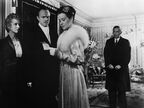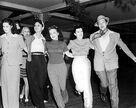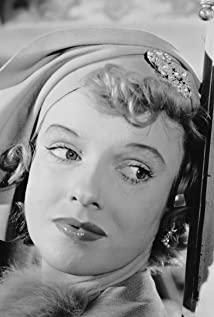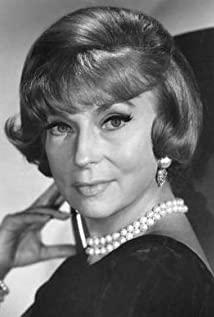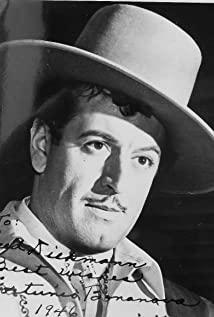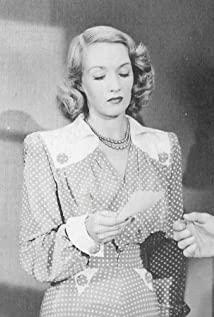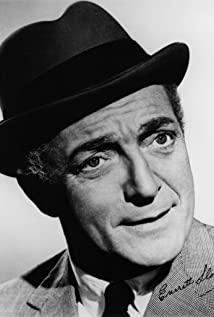05): This scene consists of six clips, which highly condense the nine-year marriage of the two with different contents in the same scene, showing Kane and his first wife Emily's intoxication from the newly married to the different dreams of the same bed. Variety. The first paragraph is drawn from Leyland's narration to reporter Thomson. A superimposed painting makes Leyland's image gradually fade away, and a panoramic shot of Kane and his new wife Emily slowly emerges. Emily was sitting at the table, and Kane came over, kissed her, and sat opposite. The camera slowly progresses with the dialogue between the two, and then switches to the front and back of the single shot. Emily's concern for Kane's busy work and Kane's wit are revealed from their words. The picture symbolizes the passage of time with a visual effect of interlaced light and shadow, and expresses time with space. Through such superimposition, the transitional connection between each paragraph is made. Entering the second paragraph, this time the camera did not frame the two in the same picture, secretly heralding the subtle changes in the relationship between the two. The content of the conversation basically repeated the previous paragraph. It was still the wife's gentle rebuke of her husband for being too busy with work, which further deepened Kane's impression of Emily's lack of company. Once again the light and shadow passed, Emily's ironic voice appeared before the picture, pulling the audience's emotions into the third clip. At this time, the camera frequently switched with the disputes between the two, showing the rapid deterioration of the relationship between the husband and wife. In the fourth paragraph, Emily's voice is still the first to enter the painting. With a superimposed painting of light and shadow passing by, her image is revealed. After several shots, the two are still confronting each other and the relationship is even more tense. The fifth paragraph is even shorter. After the superimposition, only one shot is switched from Emily to Kane. The tense dialogue between the two is cut off by Kane, and the scene is hastily changed. The sixth paragraph is the most interesting. The camera first gives Emily a close-up, and explains to the audience that she is reading Kane's rival newspaper, The Chronicle, and then cuts to Kane. The Enquirer. Then the camera pulled back directly from Kane's close-up view to the two people's distant view. At this time, they were in a backlight and their shadows were elongated. The two were sitting at opposite ends of the dining table, relatively silent, taking care of themselves. looking at the newspapers in their hands. At this time, the picture freezes, and the scene is slowly superimposed back to the scene that Liland originally described to reporter Thomson. The whole table scene starts with the advancement of a long-range shot, and finally pulls back to the long-range shot of the two people, forming a kind of echo between the beginning and the end, so that the six plots that take place at different times are connected into a coherent dialogue. It even makes the audience notice the stark contrast between the two people in the first clip and the last clip. The director used such six sets of cuts and flashes between each set, which not only reflected the passage of time but also explained the gradual deterioration of the relationship between the two, which is a truly concise audio-visual language. There are many such wonderful cuts in the film. For example, there is a gap of twenty years between the banker Thatcher's words "Merry Christmas" and "Happy New Year". The coherent, lengthy and useless parts in the middle were skipped by the director at one time; in the part of the poaching scene, the director only used three shots to show Kane's entire process of surpassing his opponent. In the first shot, the three of Kane are behind the window of their newspaper office. The words "The Enquirer's Circulation 26,000" are printed on the glass, and the glass also reflects the hurried passing of pedestrians on the street. A superimposed painting enters the second shot, and the three of them stand in front of the opponent's glass window, which reads "The Chronicle Circulation 495,000". They looked at a photo in the window of the nine top reporters and editors it took the paper 20 years to recruit. The third shot cuts to a close-up of the photo, and the picture slowly zooms in and freezes, and then the photo changes subtly and increases in clarity. The screen remained motionless, but Kane's voice sounded, and then Kane stepped into the screen. Only then did the audience realize that it was a photo-taking scene, showing that the nine reporters had all jumped to the "Enquirer". The camera pulled out further with Kane's footsteps, the old-fashioned camera flashed, and then everyone stood up and followed Kane's footsteps to the camera, and the long shot was over. This way of transitioning with photos is both smooth and concise, but also has dramatic effect, Kane's long and glorious history of struggle in his newspaper office has been vividly explained in just three shots; the latter part of the film There are also six clips that are similar to the breakfast drama. The six scenes of Susan playing jigsaw puzzles alone in the living room are listed together in the form of superimposed paintings, explaining that the day after day in Susan's life is fascinating. Suffocating emptiness and boredom. This kind of montage constitutes a scene of different time and space through each individual shot, and then superimposes these scenes to form new paragraphs. This combination of paragraphs combines the shots with the ideology and enhances the expressiveness of the film's narrative. 2. Depth of field lens The use of depth-of-field lens shortens the relationship between the audience and the picture, making the visual structure more realistic; it abandons the form factor of montage to divide the space, so that the conflict occurs in one shot, which requires the audience to be more active. Invest in thinking and even participate in the scheduling of the scene. For example, the classic depth-of-field long shot used in the childhood scene in the whole film starts with little Kane playing recklessly in the snow, the camera slowly pulls back, pulls the mother's head to the foreground, and then continues to zoom out, Banker Thatcher Mr. Er and Kane's father are in the painting, and they are located on both sides behind the mother with the movement of the camera, which also implies the fact that their position in Kane's heart cannot replace the mother's love. After the camera freezes, the stern Mrs. Kane and banker Thatcher occupy the main part of the frame, while the father and Kane are squeezed into the upper right corner of the frame. The composition in this picture is complex and meaningful. When the mother and Thatcher were discussing the details of sending the child away, the audience could still notice the dynamic figure of Little Kane outside the small window through the depth of field lens. The strong visual and auditory contrast between the front and back scenes conveys irony; the performance of depth-of-field shots also lies in the multi-information processing of the picture, which encourages the audience to actively dig out information from a shot. For example, in the scene of Susan's attempted suicide, there is a medicine bottle in the foreground, the middle scene is Susan lying helplessly on the bed, and the back scene is Kane and others breaking into the door. Needless to say, everything is clear at a glance. Just one picture, coupled with the viewer's own analysis, can accurately convey all the information. Another impressive example is that after Susan left Kane's palace, the elderly Kane walked between the opposite mirrors, and the mirrors reflected his multiple mirror images, extending to the depths. It’s a metaphor revealed through a depth-of-field lens, a metaphor for the loneliness and stubborn self-consciousness that has permeated Kane’s life. At the same time, this shot also metaphors Kane's heart. One Kane reflects countless Kanes, which reflects Kane's extremely distorted mind. 3. In this film, the use of the overhead camera creatively makes the ceiling appear in the picture, which is a change in the form of space, which makes the concept of space truly reflected; the appearance of the ceiling also strengthens the picture of the film The sense of shape of the composition, especially the neon lights projected on the ceiling and the street, increase the changes of light and shadow in the picture, which not only enriches the modeling space inside the picture, but also expands the environmental space outside the picture; at the same time, the addition of the ceiling also Can set off the portrayal of characters. The film is shot with a very low angle of view, forming what Kane calls a "tall image", "his approach is likely based on a clear aesthetic intention: to impose a certain dramatic fantasy on people. This kind of The fantasy can be called the fantasy of hell, because his upward gaze seems to come from the ground, and the ceiling covers everything, making it impossible to escape from the confines of the set, which fully expresses the doomed ending. Kane's desire for power Overwhelmed us, and the desire for power itself was overwhelmed by the set. We were able to experience Kane's power through the camera on the one hand, and his defeat on the other." 4. Light and shadow In "Citizen Kane", the backlight and Shadows play an important role in the film. The use of light can highlight the reality of the space environment in which the characters are located. In the scene when reporter Thomson was reading his memoirs in the library, the director used the atmospheric perspective method, and the light coming in through the high window showed a kind of atmosphere. The diffuse effect fills the whole scene and makes the space full; light and shadow can also participate in the narrative development of the film, especially in the scene when Kane writes his front page statement of principles, Kane is in the whole process. The manifesto that he later betrayed completed in the shadows; light can also be used as an exposed expression of the character's psychology and destiny, and even has a symbolic meaning. The lighting in this film was mostly high-brightness in Kane's youth and as a young newspaperman. As he grew older and became more acerbic, the lighting gradually dimmed and the contrast gradually increased. Kane's palace-like castle stands forever in the dark, only a few rays of light pass through the oppressive darkness. The glare of the lighting is also used in the closer shots to create a symbolic effect, with high-contrast lighting hitting Kane's face, alluding to his integrity and depravity. The reporter Thomson, who runs through the whole film, often appears in the form of shadows. This character blurred by light and shadow is the embodiment of the audience or the public, and its symbolic meaning is far greater than its specificity. two. The narrative Citizen Kane has an onion-peeling narrative structure, and its story consists of six flashbacks, which together reflect the life of newspaper tycoon Charles Foster Kane, each of which has a profound effect. Strong inner logic. These six flashbacks are not part of a whole puzzle, but an onion peeled from the outside to the inside. The first part of the documentary: shows all the major events of Kane, including his construction of the palace, his political ideas, his political career, his achievements in the publishing industry, his background and personal life, such as his two marriages, etc. . He also pointed out that he was a controversial figure, some said he was a Communist, some said he was a fascist, some said he was a promoter of democratic reform, and he himself repeatedly emphasized that he was an "American". The second part of Thatcher's memoirs: Little Kane's life experience, leaving his parents to open a newspaper when he grew up, running a newspaper to provide justice for the poor and the conflict between the two. The third part, Bernstein: introduces Kane's fortune, his first marriage, and his dismissal of Liland. The fourth part, Leland: tells about Kane's marriage to Emily, the niece of the President of the United States, his encounter with his second wife, singer Susan, and his failed presidential bid. The fifth part Susan: Introduces her and Kane's life changes from lovers to husband and wife; she wants to become famous in the music world with Kane's support. . Part VI Raymond: Kane's later years in the manor. In the eyes of different people, Kane has a different face. In the eyes of the banker Thatcher, Kane was a spoiled, irresponsible scoundrel; in Bernstein's eyes, Kane was pitiful and respectable, a man who got everything he wanted but had nothing to do with it. The man who finally lost everything; Kane's former friend, Leland, thought Kane was brilliant and paradoxical. Believe in nothing but yourself. Love only himself, not others; second wife Susan thinks Kane is a tyrant, indifferent; and the last housekeeper Raymond thinks Kane is just a poor old fool. "Citizen Kane" broke the linear narrative mode of the previous film sequence, and adopted a non-linear structure or a radial structure, or changed from a single-angle, single-level unit structure to a multi-angle, multi-level multi-narrative structure. Through the progressive narrative technique, the audience's understanding of Kane is gradually deepened, and Kane's different mappings in front of different people are reflected through the perspectives of different characters. These one-sided but real perspective pictures together form a A complete Kane. The classic Hollywood model pays attention to a closed ending, that is, the story begins with conflict and ends with problem solving, which is a dramatic story structure model. In this film, the audience can't see the ending at all, or in other words, the ending that the audience sees is just an open ending. It attaches great importance to the depth of the soul, the richness and secrets of the soul, and leaves room for the audience to explore. After a deep excavation, the film finally revealed the true body of "Rosebud", making the viewer understand that on the surface Kane was a bright and beautiful image of a great man, but in the end, what was hidden under the skin was just a A lost heart that misses the pursuit of innocence for the Rosebud brand sledboards in childhood.
View more about Citizen Kane reviews



